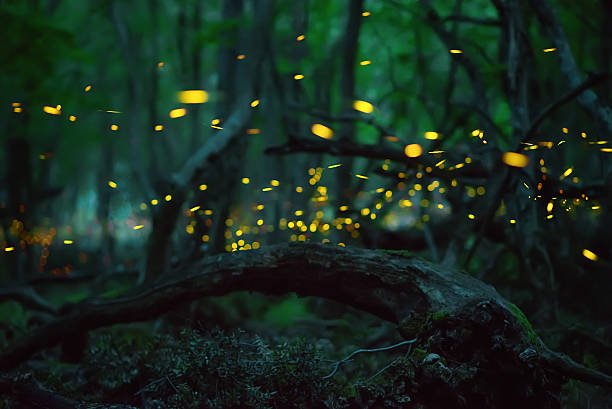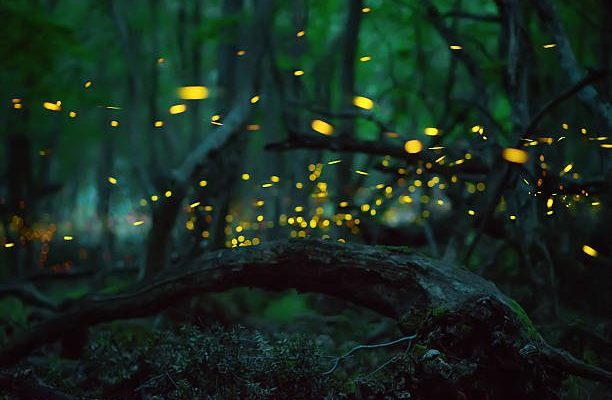
Imagine you’re sitting with a friend, sipping coffee, and you’re curious about why these glowing critters seem to shine brighter at certain times of the year. That’s what we’re diving into today! Like little glimmers of hope in the night, glow worms respond to changes in their environment, much like how we might feel more energized in the sunny days of summer compared to the cozy, slower rhythms of winter. So, let’s explore what influences their activity throughout the seasons.
Understanding Glow Worms
Before we jump into their seasonal activity, let’s get to know these amazing little creatures. Glow worms aren’t actually worms; they’re larvae of a type of beetle, specifically the *Lampyridae* family. Found in caves and forests around the world, **glow worms** use bioluminescence to attract food—tiny insects that get caught in their sticky silk threads.
It’s fascinating how they produce light. When they’re hungry, they emit a soft glow that’s both beautiful and functional. It’s like nature’s very own **nightlight**! This glow is a result of a chemical reaction involving a substance called luciferin, which is why these little guys light up like a starry night.
So now that you know what glow worms are, let’s look at how their activity changes throughout the year.
Spring: The Awakening
As the cold winter months fade away, spring is a time of awakening for glow worms. When temperatures start to rise, these larvae come out of their winter dormancy and begin to become more active. Think of it like waking up from a long nap after a cozy hibernation.
In spring, the nights are still cool, but the increased moisture and longer days provide perfect conditions for glow worms to thrive. They start spinning their silk threads and glowing to attract food. During this season, you might see them beginning to light up earlier in the evening. The excitement of spring is in the air, and these little glow bugs are no exception!
Spring Conditions
Weather plays a significant role in glow worm activity. They thrive in humid environments, ideal for their silk to stick and catch prey. If you’re looking to spot them, try heading out after a spring rain when the air is fresh, and the ground is moist. Their glows might be a little more spread out as they’re coming back to life, but it’s just the beginning of their enchanting season.
Summer: The Peak Activity
Summer is when glow worm activity reaches its peak. Longer nights and warm temperatures create a magical setting where these luminescent larvae really shine. They’re like fireworks on a clear night, dazzling and beautiful.
During the summer months, glow worms are highly active. They’re not only glowing brighter but are also more numerous. As adults emerge, they mate and lay eggs, which leads to an explosion of new glow worms. It’s a cycle of life and light that fills the warmer months with magic.
Optimal Viewing Times
You might be wondering when the best time to see these glowing beauties is. Generally, the ideal time to spot them is during humid nights, especially after a rainfall. The warm summer evenings are when they put on their best show. Finding a quiet area away from city lights will enhance your experience, allowing you to see those radiant glows against the dark backdrop of nature.
Autumn: Preparing for Rest
As summer fades into autumn, glow worms begin preparing for their winter rest. The nights become cooler, and the sweet scent of decay fills the air as leaves drop from trees. It’s a transition, much like curling up with a good book as the days get shorter.
During early autumn, glow worms are still active, but their numbers start to dwindle. They know that winter is approaching, so they begin to conserve energy, and their glowing becomes less frequent. It’s like the natural world is winding down after a busy summer—preparing for the quiet months ahead.
Signs of Seasonal Change
If you’re out and about in autumn, you might notice that glow worm activity has slowed down. They might still be visible, but you won’t see the same vibrant light show as in summer. After a rainy evening in early fall, you may catch a glimpse of their glow, but it’ll be more scattered as they get ready to retreat into hibernation.
Winter: Dormancy and Rest
Now, let’s talk about winter. This time of year is like a long sleep for glow worms. With colder temperatures and less food available, they significantly reduce their activity. It’s as if nature has tucked them in for a long, cozy nap.
In winter, the lack of light and warmth means that glow worms stop glowing altogether. They retreat into their silk threads, waiting for the warmer days to return. It’s a time of rest and rejuvenation—just as we might enjoy staying indoors wrapped in a blanket with a cup of cocoa.
Why This Matters
Understanding the seasonal patterns of glow worms is essential for conservation efforts. By recognizing how their activity is tied to environmental conditions, we can work to protect their habitats. If temperatures change or rainfall patterns shift, it may impact their lifecycle. Protecting these delicate ecosystems ensures future generations can continue to experience the beauty of glow worms.
In summary, glow worms are more than just a pretty sight in nature; they showcase how life adapts to seasonal changes. From the awakening in spring to peak illumination in summer, then winding down in fall, before settling in for a winter rest, their journey is a beautiful reminder of nature’s rhythms.
Next time you’re out enjoying a quiet night under the stars, remember the little glow worms that are out there, waiting for the right moment to shine. Understanding their seasonal patterns deepens our appreciation for these remarkable creatures and highlights the importance of preserving their habitats. So let’s cherish the glow, and maybe even find a few glowing friends on our next evening adventure!

